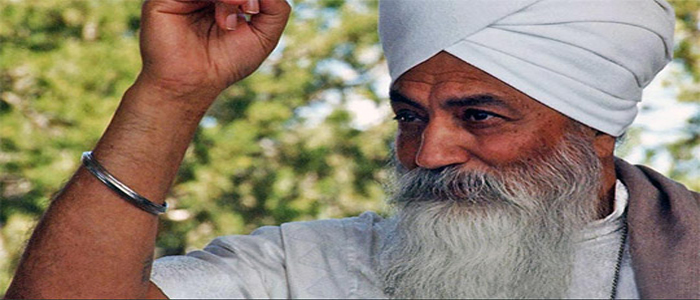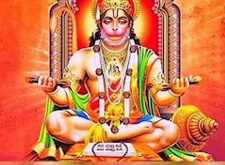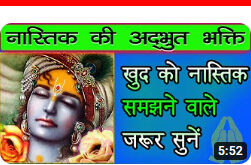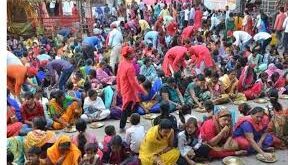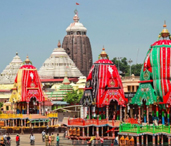just as all rivers end up in the ocean, all yoga ends up raising the kundalini.
What is the kundalini? It is the creative potential of the human being.
This chapter includes . . .
The Varieties of Yoga
Yogi Bhajan on Kundalini Yoga & Hatha Yoga
What is Raj Yoga and What Does it Have to do
with Kundalini Yoga?
Twenty-Two Forms of Yoga
The Many Facets of Kundalini Yoga
Kundalini Yoga & White Tantric Yoga
-YOGI BHAJAN
VARIEUES OF YOGA
YOGA H AS ITS ORI G I N S I N THE HUMAN EXPERIENCE.
These techniques for living a healthy, happy, and spiritually aware
life have developed through thousands of years and across many
civilizations. The human sciences of yoga are said to have been
first systematized and used in their evolved forms over 40,000
years ago. They were openly taught and integrated into daily living.
These systems were not a mystical activity. The work of the
early yogis was based upon tangible observations of energy and
the effects of different activities and attitudes on the balance of
those energies in the individual.
All forms of yoga focus on stimulating and regulating the
human energy that is the very essence of consciousness. This
energy is called the kundalini. As it originally evolved , each student
of yoga worked on all aspects of himself. He exercised the physical,
disciplined the mental, analyzed and discussed the world intellectually,
etc. Yoga was holistic, permeating every level of human
existence. With the passage of time, the techniques became diluted
and divided. As individuals catered to their different needs and
personalities, they chose to emphasize and practice separate components
of the total yogic system. Some preferred just exercise,
ignoring mantra; some did mantra and meditation without breath
control. Over time this led to the ultimate recognition of 22 different
schools of yoga. Of this original division of 22, fewer than a
dozen schools of yoga are widely practised today.
TRI-MARGA
The Bhagavad Gita calls Karma Yoga, Bhakti Yoga, and Gyan
Yoga the ‘Tri-Marga” or Threefold Path.
KARMA YOGA-FREEDOM IN ACTION
Karma Yoga is action in service to the boundless will of the sou l .
Each action becomes a dharma, a joyful duty. It i s selfless action
with no thought of reward. The philosophy of Karma Yoga is traditionally
stated in the Bhagavad Gita, where Arjuna was instructed
by Krishna, that it was his duty to fulfill his destiny without
consideration for his own misgivings and feelings to the contrary.
He was to perform his obligations selflessly, without attachment
to their outcome. Instead of making superficial external changes,
the path of Karma Yoga involves changing our internal attitudes
and emotions-transforming our actions as we refine our motivations.
Action is transcended through action.
B HAKTI YOGA-TRANSCENDING SELF THROUGH LOVE
Bhakti Yoga is the path of devotion , commitment, total and complete
surrender to the love of the Divine as the Beloved. To the
Bhakti Yogi, Yogi Bhajan says, “Be devoted. Praise the Lord. Forget
everything else. Then sometime in your life, God will bless you
and your kundalini will rise and you will be enlightened.” The
path of the faithful in most of the world’s religions is Bhakti Yoga.
An example of Bhakti Yoga is the Hare Krishna movement.
GYAN ONANA) YOGA-SEEING WITH THE EYE OF WISDOM
Gyan means knowledge, or more specifically, the experienced
knowledge inside oneself. Gyan Yoga, also known as J nana Yoga,
is the path of intellectual discrimination, knowing clearly without
the subconscious clouding the clarity. It is the path of the intellectual
and intuitive realization of the Divine in which one sees
God in everything. The flow always goes both ways: God and me,
me and God, are one; in each the other is seen clearly. In Gyan
Yoga one looks at everything, dissects it, sees that the cause of
everything is nothing but God, and concentrates on that.
* * *
HATHA YOGA-CULTIVAT ING THE B ODY
Hath a Yoga is the most popular and widely-practised form of yoga
in the West. It concentrates on perfecting the physical body in
order to affect the mind and consciousness. It utilizes 84 postures
(asanas), 24 mudras (energy seals), and three maha-mudras,
along with breath control . Yogi Bhajan describes Hatha Yoga as,
“a science where the sun and moon energy are directly united to
raise the kundalini.” Hatha Yoga requires many years of practice
under a knowledgeable teacher to reach perfection, and it emphasizes
flexibility and patience.
RAJA YOGA-B ECOMING A SP IRIT UAL KING
Raja Yoga, the Royal Path, is referred to as the yoga of meditation.
It is a science, whose philosophy includes the path of Ashtanga
Yoga (Eightfold Path. See chapter 4.) expounded by Patanjali. Raja Yoga
involves the study of the psychic centers, and the development of
the will and mental faculties as carriers of the great spiritual energy.
Yogi Bhajan says, “You focus your mind energy on each center
of consciousness and you raise your consciousness level by level,
to the highest perfection that your kundalini can be raised, to the
lotus of a thousand petals.” Traditionally, this path called for a concentrated,
monastic type of life, and needed years to reach perfection.
(See page 34 for more.)
MANTRA YOGA-TRANSCENDENCE T HROUGH SOUND
& LAYA YOGA-MERGING T H E FINITE WIT H T H E INFINITE
Mantra Yoga uses sound as a vehicle of transcendence. The goal
of Laya Yoga is to merge finite consciousness with Infinite consciousness.
With Laya and Mantra Yoga the mind is expanded
through rhythm, breath, sound and mantra. (See Sound & Mantra
chapter.) This is the most powerful, direct method of rising above
the duality of ego consciousness through the one-pointedness of
mind, breath, and sound, whose potency is maximized by being
practiced in groups.
WHIT E TANT RIC YOGA
Tantra means to weave. It is the precision of consciousness
as measured in terms of latitude and longitude.
Tantric Yoga is the way of union of the malefemale
polarity in individual consciousness. Through
the practice of Tantric Yoga, subconscious and mental
blocks to living one’s potential are cleared. It uses the
“Z” energy, which flows diagonally. Yogi Bhajan says:
“Tantra is the spun fiber of the Cosmos. Whosoever
knows the diagonal energy knows the Will of God.”
There are three kinds of Tantric Yoga: red, black.
and white. Red Tantric Yoga involves physical sexual
practices. Black Tantric Yoga involves the control of
others through the use of mental power or the control
of the elements through the refinement of mental
power. Neither are a part of White Tantric Yoga.
White Tantric Yoga is only practiced under the direct
supervision of the Mahan Tantric, in groups of couples.
It involves the controlled use of group and individual
energy generated through maintaining a position .
mantra, concentration, and communication between
the individuals and the group, under the protective aura
of the Mahan Tantric.
White Tantric Yoga is the reclaiming of innocence
and the acquisition of purity of the subconscious
through a close synchronization of the individual in
their polarities with Infin ity.
“In White Tantric Yoga, energy is created en masse
to purify the physical and mental bodies. The soul,
which is already pure. starts relating to the very existence
of the being.”
What is Red Yoga and what does it
have to ao with Kundalini Yoga?
KUN DALI N I YOGA IS A RAJ YOGA. To understand what that
means, begin with the root word: yoga-union. It implies a relationship
between two or more things which are united. To a yogi,
this is the soul and Being or God. It is the seen and the unseen.
it is the relationship between the everywhere present play of
Prakirti (the manifest u niverse) and Purusha (the seed potential
of the Cosmos at each point). These pathways toward union and
relationship are the contours of yoga practices. They are, as
Patanjali says, “limbs” of the experience of union.
Yogi Bhajan gave a sequence to explain how these approaches
are woven together in the fabric of yoga practice. First there is
Bhakti Yoga. This is the act of surrender, devotion, and commitment.
It is first because it conquers the Negative M ind. You
use the Negative M ind to negate your own ego and old patterns
and accept the command of your higher consciousness. The rule
of this facet of the path is “I obey.” Without this. few begin real
transformation and awakening.
Second there is Shakti Yoga. This is the development of discipline,
skill, and power. The purpose of Shakti Yoga is to realize:
” 1 , the ego, am the Universe, God the Infinity.” Its law is “I command.”
Soul and I become one. If the student has humility and
balance, it is “I command my self and my impulse to spontaneously
support my soul.” This is why it is said Bhakti leads to
Shakti-devotion leads to power. The metaphor implies that as you
love the I nfinite, the Infinite protects and directs you. You learn
what you need to recognize your destiny, assess the distance to
it, and perform the discipline to move toward it. It represents the
use and refinement of the Positive Mind. Many Kundalini Yoga
teachers are familiar with this stage and are challenged to balance
the demands of professionalism in yoga and devotion-using the
yoga to serve themselves and using themselves to serve the yoga.
Third is Raj Yoga. Yogi Bhajan says of Raj Yoga: ” It is a royal
command and rulership of yogic virtue and values. Guru Ram Das
sits on that throne. ” This is the full development of Identity and
Being when we talk like a sage and walk like a king. Your presence
works. just as a king is on the throne and things happen all around
to enact his orders, you become still and watch the Will of God
and the creative pulse of the Universe. The rule for this is “I am, I
AM.” It is the throne of the Neutral M ind. The least will of the king
is perceived by the court and acted on, often without an explicit
order. In this place the universe and you are not separated. There
is an immediate and subtle response to your will. The challenge is
Yogi Bhc:Uan ae(ines RCfi Yog as the “royal command ana rulership
of yogic virtue ana values.» He says that Guru Ram Oas
sits on that throne.» The RCfi Yogi rules the mind ana body
with the soul in a state of saibhung or self-illumination. Self
acknowledgment is part of what makes you royal. RCfi is that
which commands from the throne of Guru Ram Oas.
to let go and let God, to trust deeply in the process of fulfillment
and support as it acts through the path and Will of God.
Mostly the ego wants control and has its own schemes and
expectations about how things will happen. But in the larger flow
of life-Karta Purkh-the pathways of action are largely unconscious
and occur outside the framework of the ego. To embrace
that fully and to stay in synchrony with that larger will is the gift.
power and capacity of the Raj Yogi. The line of Raj Yoga came
from Krishna, then King Janak, then to the House of Nanak
through Guru Ram Das who has been given the throne of Raj
Yoga. It is through that blessing we can share this once-secret
sacred science with all in the Aquarian Age.
To a practitioner of Kundalini Yoga, of Raj Yoga, this is all a
miracle, a gift of the Creator. As Yogi Bhajan put it: ‘The Raj Yogi’s
presence performs his miracle. Others have to act and perform and
do all kinds of things. But this is the path of the King. It is not
the path of the slave. j ust feel your presence is acting; therefore
you have not to act. Never try to interfere with the power of God.
Never try to control other people. Serve, excel, and be.”
Once you are a Raj Yogi what can be left? Sahej Yoga-the
pair of opposites does not affect the yogi. The stage of flow where
there is no difference between obey and command. It is a stage
of synchrony of the mind and soul so that all experience serves
the identity and divinity established in Raj Yoga. It is a flowering
as in the expression of bani in the Siri Guru Granth Sahib.
Then comes Gyan Yoga. This is the ability to know things
clearly without the subconscious clouding the clarity; knowledge
that only comes after all three minds are conquered-Negative,
Positive, and Neutral-and synchronize the self with the Infinite.
And lastly is Karma Yoga. Action in service of the boundless
wil l of the soul. Each action is performed as dharma without reactive
karma.
To live and develop as a Raj Yogi requires self-worth, self-trust,
and self-discipline. You accept the gift of your soul from the
I nfinite. You act to sense and serve the soul in all beings. You
embrace the full scope of the creative pulse of the Creator without
fear or blame. You dissolve your self as a candle turns into light.
You commit to live with subtlety and refine your consciousness.
Twenty·two Forms of Yoga
Anabhava Yoga. The discipline of non-being; the higher yogic
practice of immersion of the self into the Self without objective
supports.
Ashtanga Yoga. The discipline of the eight limbs described
by Patanjali.
Bhakti Yoga. The discipline of love and devotion. Surrender of
the ego in love.
Dhyana Yoga. The discipline of meditation. Simran, mindfulness,
and concentration all come under this.
Guru Yoga. Merger through focus. surrender and acquisition of
virtues in relation to a teacher. It often employs a traatik picture
as a meditation in addition to service and modeling the
teacher.
Gyan Onana) Yoga. The discipline of discriminating wisdom,
to discern the real from the unreal, the intuitive from the
impulsive, and the intelligence from the intellect.
Hatha Yoga. The mastery of the polarities.
Japa Yoga. The discipline of mantra recitation.
Karma Yoga. The discipline of self-transcending action . This
was one of the primary approaches expounded in the
Bhagavad-Gita.
Kriya Yoga. The discipline to bring actions to a fulfillment
and completion within the self. In the Yoga-Sutra of Patanjali it
is mentioned as the combined practice of cleansing exercises
(tapas), deep study (svadhyaya), and devotional conscious
worship of the Supreme One in all (ishvara-pranidhana) .
Kundalini Yoga. The unitive discipline of the power of awareness
and the potential in each individual. It is a Raj Yoga. Once
called the science of the serpent power (kundalini-shakti),
which is fundamental to the tantric tradition, including Hatha
Yoga. In Eastern symbology, the serpent represents energy,
essence, awareness, rejuvenation and the play of the spirit.
Laya Yoga. Merging the fin ite with the Infinite. The use of
sound and mantra with rhythm and a sensitivity to its subtle
structure. Often practiced in groups.
Mantra Yoga. A discipline of the Yoga tradition ever since
Vedic times, it uses sounds that protect and project the mind.
Nada Yoga. The discipline of the inner sound, the primal
vibration.
Siddha Yoga. The discipline of the adepts to develop powers
and extraordinary capacities.
Samkhya Yoga. The discipline of insight into the nature of
things. A philosophy of liberation teachings referred to in the
Mahabharata.
Raj Yoga. The royal unitive discipline, a Maha Yoga. The
Yoga-Shikha-Upanishad refers to it as the combined practice of
Mantra Yoga, Laya Yoga, Hatha Yoga, and Raja Yoga. Add the
direct link of awareness given by the master’s touch and the
Shabd Guru.
Sahej Yoga. Practice of a state of ease, flow and grace in which
all polarites are seen to serve the One. It is considered part of
Raj Yoga and is both devotional and powerful.
Shakti Yoga. The techn iques in a yoga approach that give
strength, power and activity. It relies on practices and actions
that develop the feeling of potency and ability in the individual
rather than through devotional practices alone. Shakti and
Bhakti approaches inform and supplement each other.
Tantra Yoga. The psychophysical techniques employed in
Tantra to clear the subconscious and promote the clarity of the
soul. We do the White Tantra form.
Traatik Yoga. The discipline of gazing on a sacred object or
picture of the teacher.
Yantra Yoga. The discipline of focusing the mind upon geometric
representations (yantra) of the Cosmos or of energetic
processes such as the chakras.
 पौराणिक कथाओं, प्रेरक क्षण, मंदिरों, धर्मों, फिल्मों, हस्तियों के बारे में दिलचस्प जानकारी, हजारों गाने, भजन, आरती के बोल हैं Your wish may come true today…
पौराणिक कथाओं, प्रेरक क्षण, मंदिरों, धर्मों, फिल्मों, हस्तियों के बारे में दिलचस्प जानकारी, हजारों गाने, भजन, आरती के बोल हैं Your wish may come true today…
